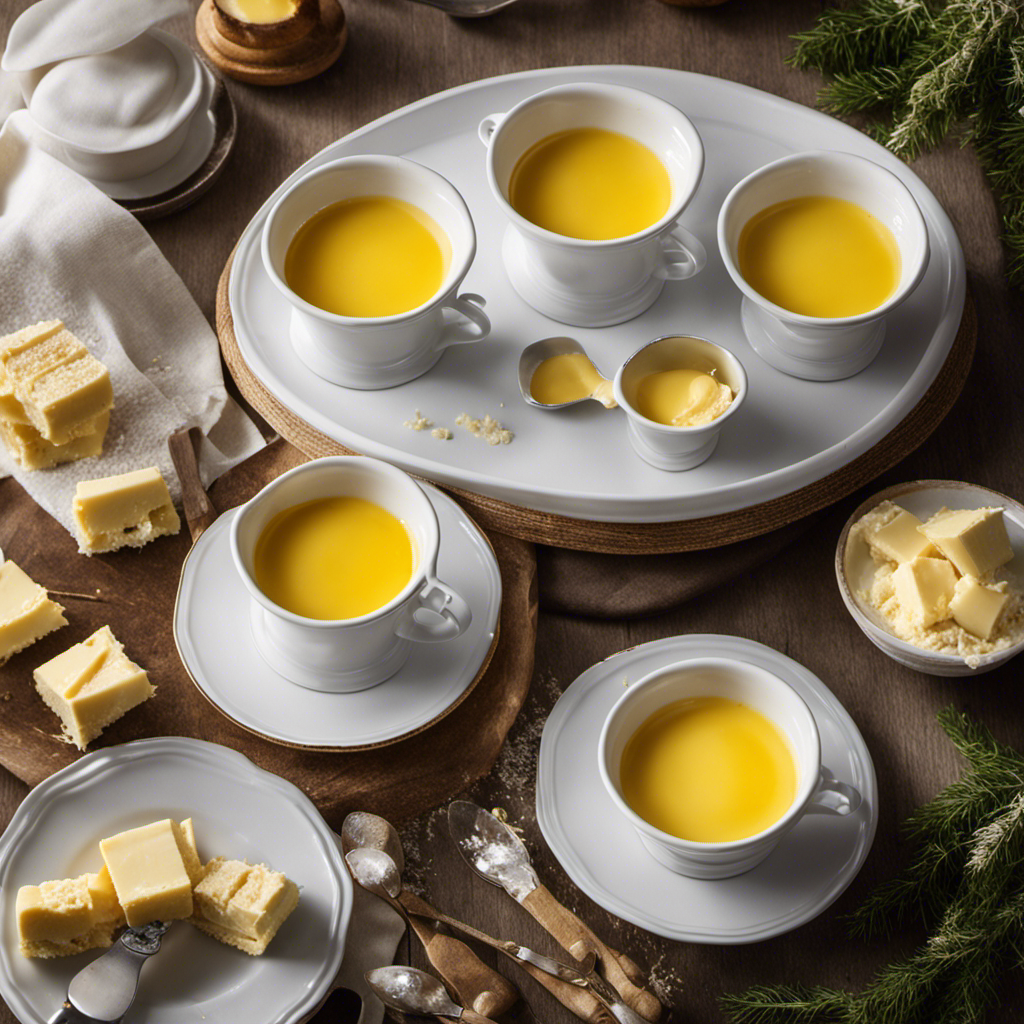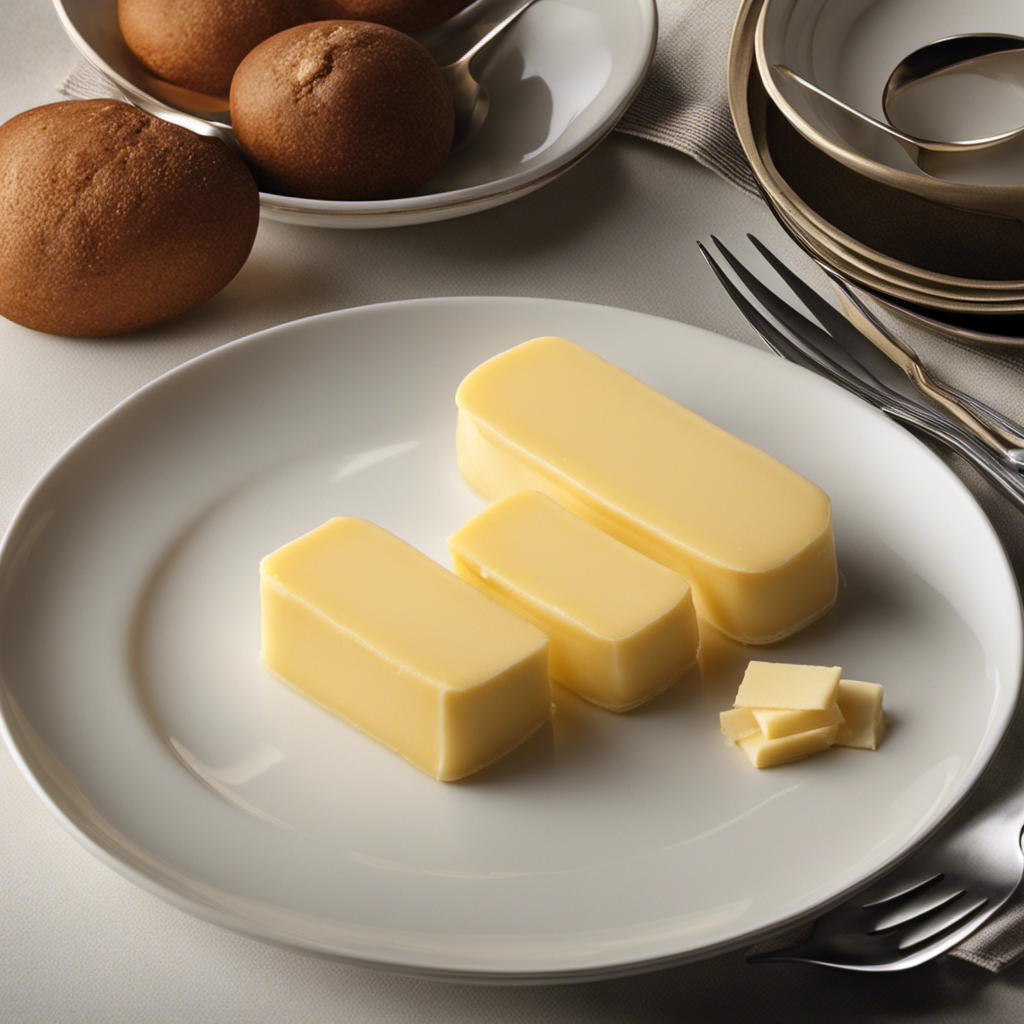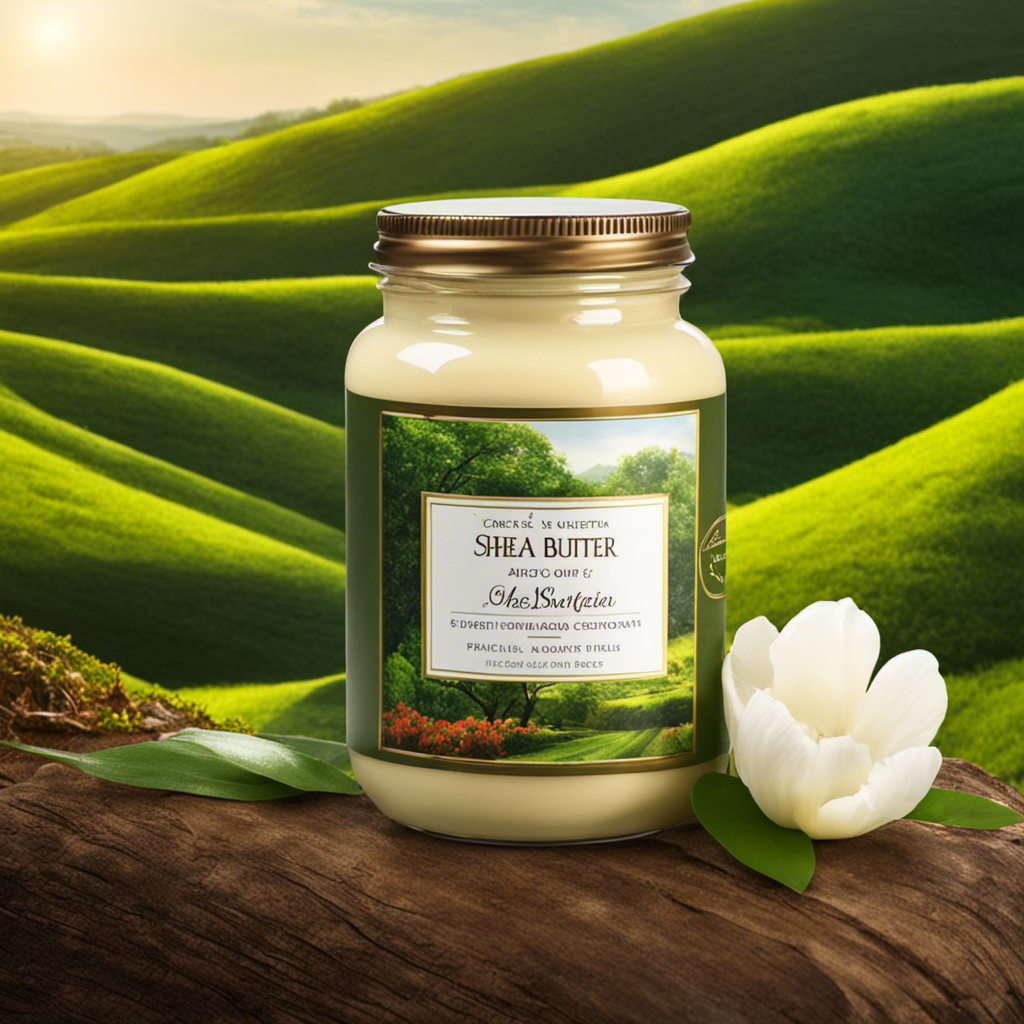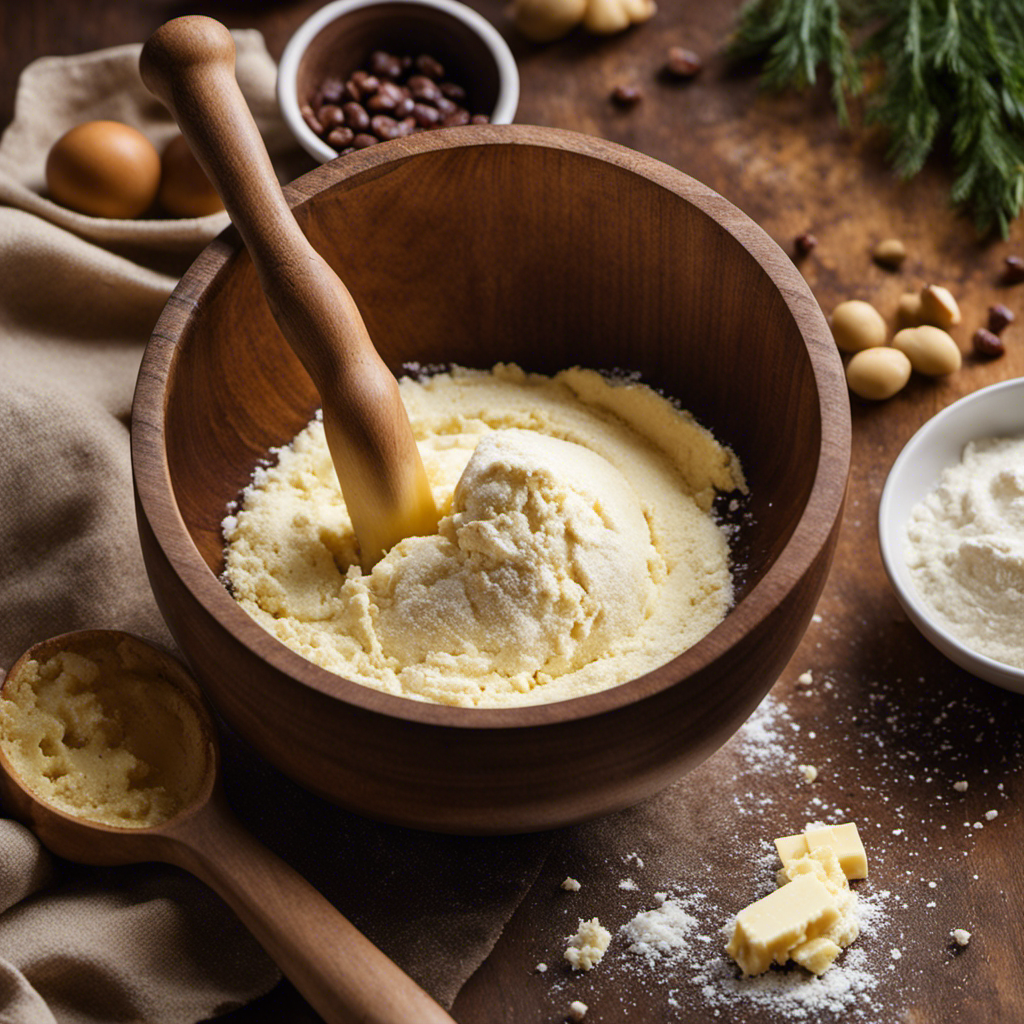I’ve consistently held the conviction that cooking is a form of artistry, in which ingredients and their quantities meld to produce remarkably delectable creations. Similarly, as a painter requires the appropriate palette of colors, so does a baker need the proper ingredients at hand in their kitchen.
But what happens when a recipe calls for shortening and all you have is butter? Fear not, my fellow culinary artists! In this article, I’ll guide you through the conversion ratio and show you how to substitute that 1/2 cup of shortening with the perfect amount of butter.
Let’s get cooking!
Key Takeaways
- The general rule for substituting shortening with butter is 1 cup of shortening for every 1 cup of butter.
- 1 cup of shortening is equivalent to 1 cup of butter, so if a recipe calls for 1 cup of shortening, you can substitute it with 1 cup of butter.
- The texture and flavor of the finished product may vary slightly when using butter instead of shortening.
- Proper measuring techniques are important when converting between different fats in baking.
Understanding the Conversion Ratio
To understand the conversion ratio, you’ll need to know how much butter is equal to a cup of shortening. It is important to use proper measuring techniques when converting between different types of fats in baking.
Shortening is a solid fat commonly used in baking to add moisture and tenderness to baked goods. There are different types of shortening available, such as vegetable shortening and butter-flavored shortening. Vegetable shortening is made from hydrogenated vegetable oils and has a neutral flavor, while butter-flavored shortening has added butter flavoring.
When substituting shortening with butter in a recipe, the general rule is to use 1 cup of shortening for every 1 cup of butter. This conversion ratio ensures that the texture and moisture of the baked goods remain consistent.
Now, let’s move on to calculating the equivalent measurement.
Calculating the Equivalent Measurement
You can calculate the measurement equivalent by using a cup of shortening.
Converting shortening to butter in baking can be tricky, but with the right measurements, you can achieve the desired results.
When measuring shortening and butter accurately, it’s important to know that 1 cup of shortening is equivalent to 1 cup of butter.
This means that if a recipe calls for 1 cup of shortening, you can substitute it with 1 cup of butter.
However, it’s worth noting that the texture and flavor of the finished product may vary slightly when using butter instead of shortening.
Substituting Shortening With Butter: the Basics
When substituting shortening with butter, it’s important to consider the texture and flavor of the finished product. Butter is a popular alternative to shortening because of its rich flavor and creamy texture.
However, when using butter as a substitute, it’s crucial to keep in mind that it contains water, which can affect the texture and moisture levels of the baked goods.
Margarine is another option, but it often contains trans fats, which are unhealthy.
Alternatively, coconut oil and vegetable oil can be used as shortening substitutes. Coconut oil gives a unique flavor and adds moisture to the recipe, while vegetable oil provides a neutral taste.
Ultimately, the choice between butter, margarine, coconut oil, and vegetable oil depends on personal preference and the desired outcome of the baked goods.
Adjusting Recipes for Texture and Flavor
For adjusting recipes for texture and flavor, it’s important to experiment with different ingredients and measurements to achieve the desired outcome. When it comes to achieving the perfect texture with alternative fats, there are several options to consider. For example, coconut oil can be a great substitute for butter in baked goods, as it adds moisture and a subtle coconut flavor. Another alternative fat to try is avocado, which can provide a creamy texture and a mild, nutty taste. Additionally, exploring different flavor profiles with butter substitutions can be an exciting way to elevate your dishes. For instance, using olive oil instead of butter can add a rich, fruity flavor to sautéed vegetables or pasta dishes. Don’t be afraid to get creative and experiment with different fats and flavors to find what works best for you.
| Alternative Fat | Texture | Flavor |
|---|---|---|
| Coconut oil | Moist | Subtle coconut |
| Avocado | Creamy | Mild, nutty |
| Olive oil | Rich | Fruity |
Common Pitfalls to Avoid When Substituting
To ensure successful substitutions, it’s crucial to be mindful of common pitfalls when substituting with margarine or vegan alternatives.
One common pitfall is not considering the difference in fat content. Margarine and vegan alternatives often have a higher water content compared to butter or shortening, which can affect the texture and moisture of baked goods.
Another pitfall is not adjusting the amount of salt in the recipe. Margarine and vegan alternatives may have different salt levels compared to butter, so it’s important to adjust accordingly.
Lastly, not all margarines or vegan alternatives are suitable for baking. Some may contain ingredients that can affect the taste or texture of the final product. Therefore, it’s important to choose the right substitute based on the specific recipe and desired outcome.
Frequently Asked Questions
Can I Substitute Shortening for Butter in Any Recipe?
Yes, you can substitute shortening for butter in most recipes. However, if you’re looking for a vegan option, try substituting with plant-based butter or margarine. Keep in mind that butter has health benefits over shortening.
How Does Substituting Shortening With Butter Affect the Texture of Baked Goods?
Substituting shortening with butter can affect the taste and texture of baked goods. Butter adds richness and flavor, but it also has a lower melting point than shortening, resulting in a different texture. Additionally, butter has a shorter shelf life than shortening.
Can I Use Margarine Instead of Butter When Substituting for Shortening?
When substituting shortening with butter, it’s important to consider the texture of baked goods. Margarine can be used as a substitute for butter, but it may affect the final texture and flavor. Pros and cons should be considered.
How Does the Flavor of Baked Goods Change When Using Butter Instead of Shortening?
When using butter instead of shortening in baked goods, the flavor becomes richer and more complex. However, butter contains more saturated fat than shortening, which can have health implications if consumed in excess.
Are There Any Specific Types of Recipes Where Substituting Shortening With Butter Is Not Recommended?
There are specific types of recipes where substituting shortening with butter is not recommended due to the difference in texture and flavor. Additionally, consuming too much shortening can pose potential health risks.
Conclusion
In conclusion, when it comes to substituting shortening with butter, it’s a piece of cake! Just remember that 1/2 cup of shortening equals a whole lot of butter.
This conversion ratio is crucial for achieving the perfect texture and flavor in your recipes. So, don’t be afraid to make the switch!
With this knowledge in your baking arsenal, you’ll be able to create mouthwatering treats that will have everyone begging for more. So go ahead, butter up and let your culinary creations shine!










